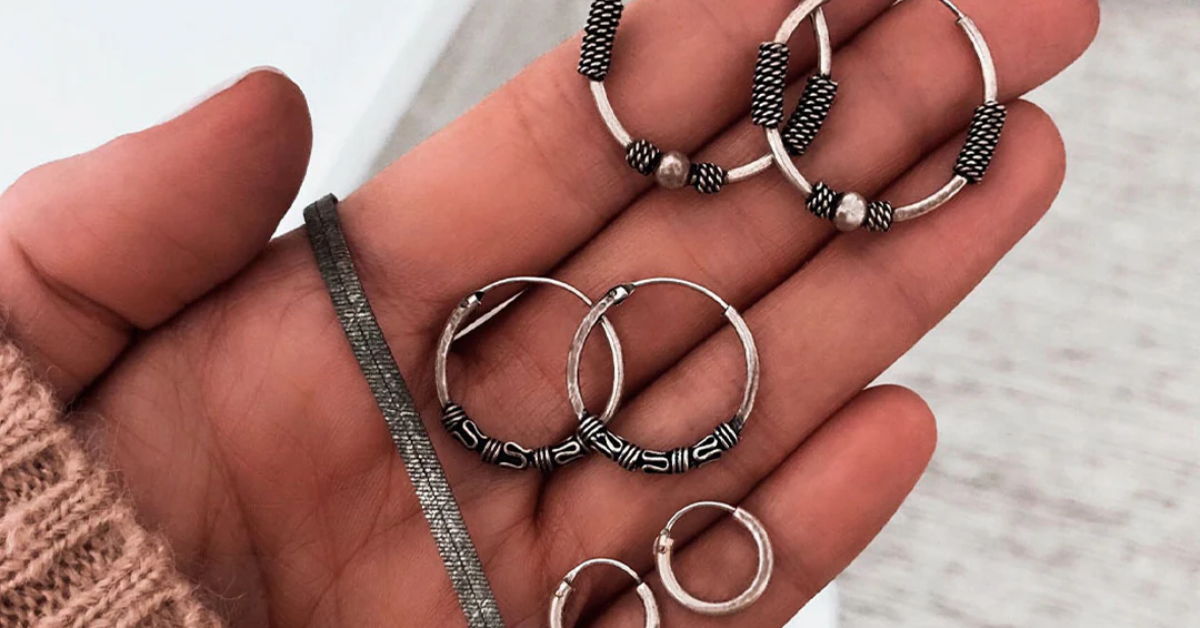Silver jewellery is one of the most loved choices in the world, but many people notice that their favourite pieces start to lose shine over time. If you own 925 sterling silver, you may wonder: how long does it take to tarnish, and can it be prevented? This guide will explain what 925 sterling silver is, how tarnishing happens, how to care for it, and whether “tarnish-free” claims can really be trusted.
What is 925 Sterling Silver?
925 sterling silver is a type of silver that contains 92.5% pure silver and 7.5% other metals, usually copper. Pure silver (99.9%) is too soft for most jewellery, so adding alloy gives it more strength and durability.
According to the Silver Institute, more than 70% of silver jewellery worldwide is made from sterling silver because it strikes the right balance between beauty and strength. It is used for rings, bracelets, necklaces, and earrings.
How Long Does it Take for 925 Sterling Silver to Tarnish?
Tarnish is a natural reaction between the silver and elements in the air, mainly sulphur and oxygen. It shows up as a dull or black coating on the surface.
The time it takes for sterling silver to tarnish depends on many factors:
-
Environment: High humidity and polluted air can make silver tarnish faster.
-
Usage: Daily wear pieces tarnish faster because of sweat, perfumes, and lotions.
-
Storage: Silver left out in the open tarnishes quicker than silver stored in airtight boxes.
On average, 925 sterling silver can begin to show signs of tarnish in two months to a year, depending on care. A study from the International Precious Metals Institute found that silver kept in humid air tarnished 70% faster than silver stored in dry, airtight conditions.
Can You Prevent 925 Silver from Tarnishing?
While tarnish cannot be fully stopped, it can be slowed down with proper care:
-
Store silver in airtight bags or anti-tarnish cloths.
-
Keep jewellery away from chemicals like perfume, hairspray, and chlorine.
-
Wear silver regularly — surprisingly, natural skin oils can help prevent tarnish.
-
Use anti-tarnish strips in your jewellery box.
Does All Silver Tarnish?
Yes, all real silver will tarnish over time, including fine silver and sterling silver. The difference lies in how quickly. Pure silver tarnishes more slowly because it has less alloy, while sterling silver tarnishes faster due to the presence of copper.
According to jewellers, copper is the main reason sterling silver darkens because it reacts strongly with sulphur in the air.
What Other Jewellery Material Tarnishes?
Sterling silver is not the only metal that tarnishes. Others include:
-
Copper: Tarnishes quickly and turns green (patina).
-
Brass: Tarnishes and darkens with air exposure.
-
Bronze: Develops a greenish layer over time.
-
Gold-plated jewellery: The thin gold layer wears off, exposing tarnished base metals beneath.
In comparison, metals like platinum and stainless steel resist tarnishing, which is why they are sometimes chosen for long-lasting jewellery.
What to Do if Your 925 Sterling Silver is Already Tarnished?
If your silver has already turned dark, do not worry — it can be cleaned and restored.
-
Use a silver polishing cloth to gently wipe the tarnish.
-
Make a simple cleaning solution with baking soda and warm water to soak the piece.
-
For stubborn tarnish, professional jewellers offer ultrasonic cleaning.
According to a report by the Jewellery Retail Association, over 60% of silver owners clean their pieces at home, while 25% prefer professional cleaning once a year.
Should You Trust "Tarnish Free" Jewellery?
Some jewellery brands advertise “tarnish free” silver. In most cases, this means the silver is coated with a protective layer like rhodium. While this coating can delay tarnish, it usually wears off with time, and the silver beneath will still tarnish eventually.
It is best to be cautious with these claims. True sterling silver will always tarnish eventually, but with care, it can stay shiny for years.
Conclusion
925 sterling silver is beautiful, durable, and one of the most popular jewellery materials in the world. However, it does tarnish because of its copper content. Depending on how you wear and store it, tarnish can appear in just a few months or take up to a year. While tarnish cannot be stopped completely, it can be slowed with proper storage, cleaning, and care.
When choosing sterling silver, remember that tarnish is normal and does not mean your jewellery is ruined. With regular cleaning, your silver can keep its shine and last a lifetime.
FAQ’S
Does sterling silver tarnish faster than fine silver?
Yes, because it contains copper, which reacts more quickly with air.
Can I wear sterling silver every day?
Yes, but clean and store it properly to slow down tarnish.
Is tarnish harmful?
No, tarnish does not damage the silver itself and can be cleaned off.
What is the best way to store sterling silver?
In an airtight bag with anti-tarnish strips.
Does rhodium-plated sterling silver tarnish?
It resists tarnish for longer, but the coating can wear off over time.
